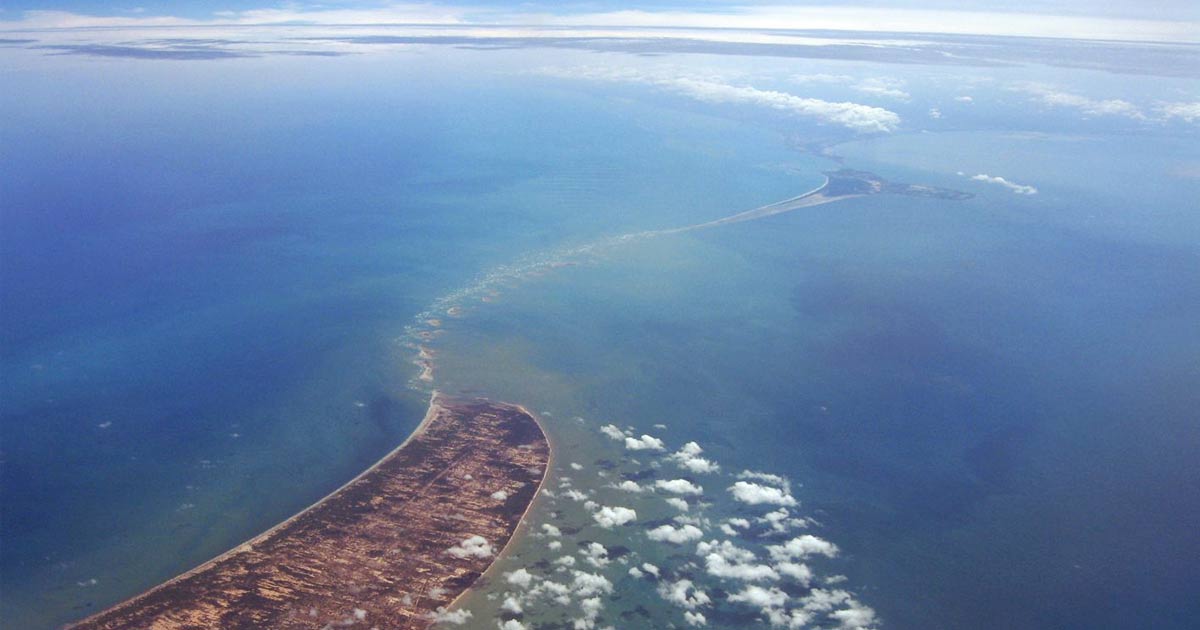Bridge between India and Sri Lanka: Wicremesinghe moves and agreement signed
As Chinese influence grows in the country, the link would give India access to the key ports of Trincomalee and Colombo. It remains an ambitious project and not without technical problems and socio-economic risks, but the step forward took place at a significant moment in a political key: the first official visit to New Delhi by the president of Sri Lanka.
Colombo (AsiaNews) - The governments of India and Sri Lanka have signed an initial agreement to lay the foundations for the construction of a bridge that connects the continent to the island's key ports: Trincomalee and Colombo. The work would also include a possible pipeline from southern India to Sri Lanka.
Analysts are of the opinion that the bridge connection between the two neighboring countries could favor dialogue in the Indian Ocean region. In fact, although New Delhi has always had solid ties with its southern neighbor, Sri Lanka has become a land of conquest of China and its companies, thanks to its strategic position in the Indian Ocean.
Ski Lanka President Ranil Wickremesinghe was welcomed to India last week for a two-day official visit at the invitation of Prime Minister Narendra Modi. According to the Indian Foreign Minister Vinay Mohan Kwatra, the "land" connection between the countries was proposed again by the president of Sri Lanka, who had already presented the same project to India when he was prime minister between 2002 and 2004 The difference is that this time he has found an ally in Modi.
The bridge would be built over Palk Strait, a particular conformation known as Adam's Bridge, 33 kilometers long. The bridge would rest on this seabed which in some points is less than 10 meters deep. For comparison, the Channel Tunnel between France and the United Kingdom crosses the sea for around 38 kilometres.
Political analyst Anuradha Senanayake explains to AsiaNews that "the plan also provides for a short-term strengthening of passenger ferry services between Nagapattinam in Tamil Nadu and Kankesanthurai in Sri Lanka.
Connectivity between India and Sri Lanka, sea and air links are already strong, with the bridge the interpersonal ones will increase. In any case, I believe it is necessary to study the feasibility of the proposed bridge, see the advantages for both countries and carry it forward".
According to academic Sampath Malaslaekara "due to the increase in Chinese naval presences in the Indian Ocean, during the meeting Modi also raised his concerns for India's security - given the tensions with Beijing - aiming to keep Colombo in sphere of influence of New Delhi".
On the infrastructure front, Sri Lankan computer engineers Harin Mirihella and Randesh Bandara are of the opinion that “when India and Sri Lanka are connected with a land bridge, there will also be disadvantages for Sri Lanka: many Indian professionals enticed by the quick connections and lower cost of living they might relocate their businesses. Sri Lankans may also be missing out on job opportunities in several fields, including the IT sector, where many projects are currently being managed by Indian tech giants."
As part of the meeting between Modi and Wickremesinghe, the two countries signed five agreements on renewable energy, including an energy contract for Sampur Solar Power, which includes economic development projects in the Trincomalee district and an agreement for the use of the system Unified Payments Interface (UPI) of India in Sri Lanka
24/01/2007
12/02/2024 13:34
22/01/2024 18:20







.png)










